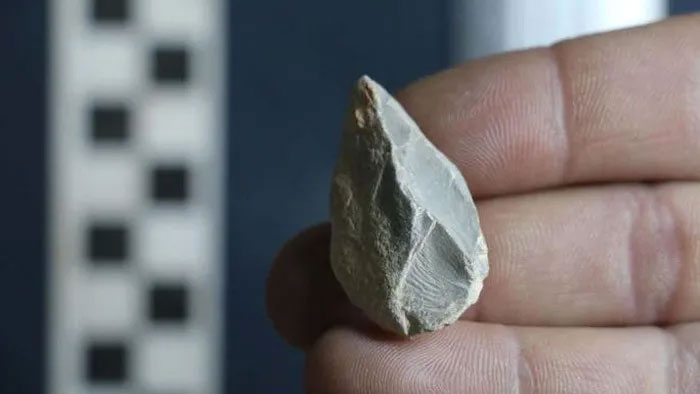Scientists are working to solve the mystery of 1,930 meticulously crafted limestone pieces resembling spearheads: are they truly evidence of a ghostly people who inhabited Central America 30,000 years ago, or merely a natural prank?
According to Gizmodo, a research team led by archaeologist James Chatters from the company Applied Paleoscience has rebutted the conclusions of a scientific group led by archaeologist Ciprian Ardelean from the University of Zacatecas (Mexico) regarding the 1,930 mysterious limestone pieces excavated from the Chiquihuite Cave in Zacatecas (Mexico).

One of the controversial stone pieces – (Photo: Ciprian Ardelean)
While Dr. Ardelean’s team asserts that the pieces were crafted by human hands as tools 30,000 years ago, Dr. Chatters’ team concludes that they may have formed through natural processes.
According to Science Alert, Dr. Chatters argues that the hypothesis of archaeological treasures left by an ancient group does not hold up. Examination of the flaking patterns on the stones suggests they are consistent with random collisions between stones rather than impacts made by human hands. Furthermore, these tools appear to be in pristine condition: it seems illogical that ancient people would create a cache of valuable items without using them. If they were used, the tools would show signs of cracking and wear.
Additionally, all these “tools” are made from the same type of stone, which would be quite unreasonable if created by a group of people, as humans typically experiment with various types of stones available in their area. Nearby, there is a rich deposit of agate that has the potential to create better, more easily accessible tools, yet it has not been touched.
Previously, the team from the University of Zacatecas claimed these tools belonged to the first settlers of Central America, referred to as a “ghostly people.” Besides the stone pieces resembling tools, there are no human remains or any signs of habitation within the cave. Therefore, their existence remains a topic of debate.


















































